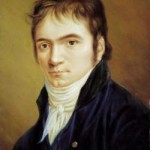This is one of my favourite albums from the glam rock era of the early seventies. Mott the Hoople was an ill-starred band from Herefordshire that was saved from obscurity by the timely gift of a song, “All the Young Dudes” by David Bowie, who also produced the album. It’s a solid play, through and through. As well as the fine title song, it has one of the three best versions of “Sweet Jane,” the band’s own “One of the Boys,” “Sea Driver,” and “Ready for Love,” all satisfying songs. At heart, the band was a low-key R&B combo that did not fit comfortably into the heavily arranged glam style. I don’t know if this album has any status as an official rock “classic”, but it has always remained in my pleasure playing repertoire. I’ve just acquired the 2006 remastered reissue, with seven bonus tracks.
Category Archives: CL - Listening 2010 - Page 2
Burial ― elegant dubstep
I only feel the urge to listen to dubstep occasionally. A lot of the stuff out there seems to be assembled from instructions, like Ikea furniture ― “lockstep” sometime seems a more appropriate genre name. Nobody can say that about the two albums by Burial (aka William Bevin): Burial (2006) and Untrue (2007). The rythms don’t feel mathematically locked in. They have a little bit of wiggle room. While I prefer Untrue, of the two, either one would be suitable to demonstrate to a doubter that dubstep can be emotionally satisfying.
Howard Hanson’s “Nordic” Symphony
Howard Hanson’s symphonies languished in relative obscurity until, shortly before he died, a movement of his second symphony was used by Ridley Scott for the closing credits of the film Alien. Since then, his music has been in demand. This shows just how accidental the rise and fall of musical reputations can be. A Swedish-American from Nebraska, Hanson composed in a relatively traditional style, little influenced by the academic trends of the 20th century. Musical sophisticates wrote him off as an anachronism. A recent book by Walter Simmons that discusses his work, as well as that of other “Neo-Romantic” Americans like Ernst Bloch, Samuel Barber, and Paul Creston, is aptly entitled Voice in the Wilderness. Read more »
First-time listening for July, 2010
22348. (Dave Brubeck Quartet) Jazz at Oberlin
22349. (Voodoo Glow Skulls) Firme
22350. Sri Lanka — Musiques Rituelles Et Religieuses Read more »
First-time listening for June, 2010
22259. (Bade Ghulam Ali Khan) The Greatest
22260. (Built to Spill) Keep it Like a Secret
22261. (Dodos) Time to Die Read more »
Bade Ghulam Ali Khan
This master of both the sarangi and vocals died in 1968. His voice had enormous range and sweetness, with which he interpreted the romantic thumri in a style fusing many different regional traditions. The album I own offers two long ragas and four short thumri, of which I preferred the latter, especially “Yaad Piya Ki Aaye”.
First-time listening for May, 2010
22160. (Jacques Lu Cont [aka Stuart Price] ) FabricLive.09, April 2003
22161. (Killers) Hot Fuss
22162. (Dutchess & the Duke) Sunset / Sunrise Read more »
Paul Abraham’s operettas
It’s pretty obvious that the American musical comedies, on stage and film, owed a lot to the Austro-Hungarian operettas. But the influence also moved in the other direction. I have an old vinyl with highlights of two operettas by Paul Abraham, Viktoria und ihr Husar (1930) and Die Blume von Hawaii (1931), and they display a strong influence from Jazz and Broadway. They were very popular in their day, but are now rather obscure. The second even has an American setting (Hawaii) and features songs sung in German with a comically intended American accent, and has English phrases scattered about in the lyrics. Abraham, a Jew, fled Europe shortly after these successes, only to wind up in a New York mental hospital in 1946. He recovered, and lived until 1960. Both are pleasant listening, with the added interest of demonstrating the cross-fertilization of popular music between Europe and America between the two wars.
First-time listening for April, 2010
22083. (Johann Sebastian Bach) Cantata #20 “O Ewigkeit, du Donnerwort (I)”, bwv.20
22084. (Johann Sebastian Bach) Cantata #21 “Ich hatte viel Bekümmernis”, bwv.21
22085. (A Sunny Day In Glasgow) Ashes Grammar Read more »
Beethoven’s Piano Concerto #1
None of Beethoven’s piano concertos have carved out any special place in my affections. I’m not sure why. They just don’t seem to move me like the symphonies, sonatas, or quartets do. Number One in C, Op.15 was actually composed in 1796–7, long after Number Two (1789). It has a few nice bits, but most of the time it sounds like warmed-over Hayden. Glen Gould composed cadenzas for it that brighten it up a bit.
A painting of Beethoven in 1803, seven years after composing the first piano concerto, shows him nothing like his later snarling, scowling image. In 1796, its probable date of composition, he would have still looked almost a teenager.
